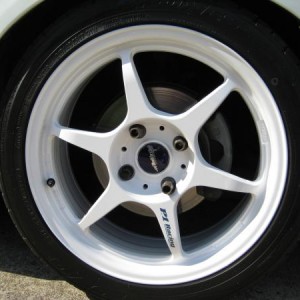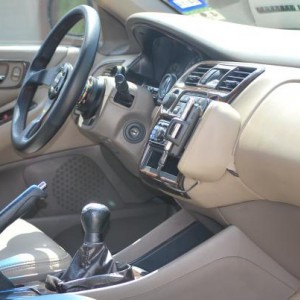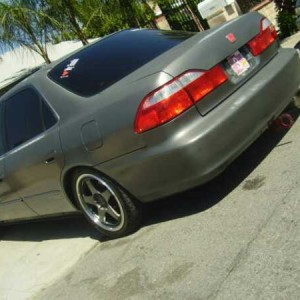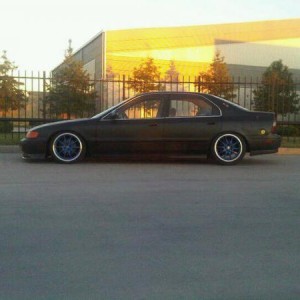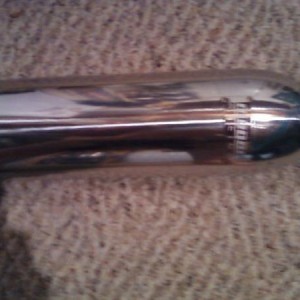In reference to this question that has been brought up (and subsequently locked before I had a chance to post this)...there is no responsibility/liability from me or any members of this site for doing this, first off.
Seems like he is aware of the weakness of the V6 trannys. Even another thread addresses what it is exactly that fails on the automatic transmissions (clutch packs). I'm not a master at any of this, so idk if this shifting which Honda outlines in the manual is in fact detrimental to the already weak transmission which they know of (and why they extended the warranty period for our years).
As for being recommended, it isn't recommended per say, but the Owners Manual does say that it is possible. Not sure if a dealership would buy that, but just saying. The transmission does/is supposed to have a lockout that prevents the transmission from shifting down/into reverse above certain speeds.

I haven't tested this, but I am guilty of downshifting at times with my auto, usually from D4>D3 on highways, this is much like the overdrive button on other cars, so I don't see this as a huge issue. Sometimes, when on a street with a number of stop signs, I'll go down to 2 so that I stay in 2nd gear, preventing that lurch that sometimes happens at low speeds when the tranny decides to downshift by itself. This makes it a bit smoother since it stays in that gear. As for upshifting, meh, that's just seems weird since it is no way like a manual, as the transmission will shift at it's own points anyway, and has been "proven" not to improve acceleration times.
Varying arguments from another member here:
Which contradicts a post he made a few years back a little:
Again, not recommending this by any means, just laying out my experiences. Just so that there's no argument, we as a community don't recommend it, so if you do it and mess up your tranny, don't come crying back here.
/argument
Anyways, I drive a 1998 v6 sedan, and I was wondering if shifting through gears (ie D1 > D2 > D3 > D4) would harm the transmission in anyway?
Im aware of the already weak trannys that the v6's possess, but was trying to get a definite answer.
Seems like he is aware of the weakness of the V6 trannys. Even another thread addresses what it is exactly that fails on the automatic transmissions (clutch packs). I'm not a master at any of this, so idk if this shifting which Honda outlines in the manual is in fact detrimental to the already weak transmission which they know of (and why they extended the warranty period for our years).
Where did you hear our transmissions are weak? They're strong as fawk, just be careful to not neutral drop, driving it like that is acutally recommended by Honda.
As for being recommended, it isn't recommended per say, but the Owners Manual does say that it is possible. Not sure if a dealership would buy that, but just saying. The transmission does/is supposed to have a lockout that prevents the transmission from shifting down/into reverse above certain speeds.

I haven't tested this, but I am guilty of downshifting at times with my auto, usually from D4>D3 on highways, this is much like the overdrive button on other cars, so I don't see this as a huge issue. Sometimes, when on a street with a number of stop signs, I'll go down to 2 so that I stay in 2nd gear, preventing that lurch that sometimes happens at low speeds when the tranny decides to downshift by itself. This makes it a bit smoother since it stays in that gear. As for upshifting, meh, that's just seems weird since it is no way like a manual, as the transmission will shift at it's own points anyway, and has been "proven" not to improve acceleration times.
umm most engines ( including the j30a1) don't have max HP/torque at redline
the only reason people ( and mysef sometimes) do manual shifts with an automatic is because it revs higher/sounds louder/sounds faster
in reality the fastest an automatic can accelerate is to put it in d3/d4 and then just floor it, the cpu will shift at the optimal RPM's
Varying arguments from another member here:
SteVTEC from V6P said:This isn't that hard.
Either an automatic will shift at the optimum shift points for maximum acceleration, or they won't. On the 7th gen the auto tranny would short-shift at 6500 even though redline was at 6800 and the engine kept making power up that high. Guess what? If you manually shift it yourself not only do you get an extra 300rpm and corresponding power, but you land in a meatier part of the next gear and maintain higher overall acceleration.
Now here's a question for 8th gen owners.
http://www.youtube.com/watch?v=sRtjEt2dLd0
Looks like a full throttle 0-60 run, with the car left in "D". I saw about 6000rpm on the 1-2 full auto, and about 6500 on the 2-3 in full-auto. Is that how the transmission really shifts? If so that's completely lame. The engine makes peak power at 6200rpm, and since it doesn't just drop off immediately after that the optimal shift point would be at the 6800rpm redline. The full-auto 1-2 is robbing you of nearly 1000 rpm worth of usable power, and at least 300 on the 2-3. Along with further neutering the car by limiting throttle opening on launch, I guess this could explain why the car tests out so slowly. Manually shift the 1-2 at 6800 and the 2-3 at 6800 and the car will fly in comparison to the full-auto shifts.
My V6 RAV4 is similar. Peak power at 6200 and redline at 6400, yet the auto tranny upshifts at 5800-6000, robbing you of fully utilizing the power that you've payed for. Want maximum acceleration? Gotta shift it yourself and get your extra 400-600rpm back. Old 4th gen Maximas (1995-1999), what I used to own. Peak power at 5200-5600rpm, and an auto shift point at 6000, with redline at 6600. Good enough, no need to manually shift. Also no need to wind it all the way out to 6600 because the engine is no longer making any power up there. Optimal shift point is before redline. The 2000-2001 Maxima with 222hp @ 6400rpm. Guess what? Stupid Nissan left the auto-shift points still back at 6000rpm and basically never touched them, probably in a cost cutting move. The car with an automatic was slow as balls unless you manually shifted to get 600rpm worth of usable power back. Manual shift at the limiter and it's a huge difference.
NO, manually shifting an auto doesn't kill it. Bad transmission design kills transmissions. The transmission is shifting itself all the time, so it makes little difference if you manually shift once in awhile. Electronically controlled transmissions won't let you do anything stupid nowadays anyways, like downshift to 2nd at 80 mph. It'll hold the current gear or just downshift to 3rd instead. You really could **** up an automatic before the electronically controlled days because the shifter was a direct link to the transmissions which allowed a bone-headed driver to do something dumb like the above, but those days are long gone. All of Honda's tranny woes from 1999-2004 weren't caused by people manually shifting the things. They were caused by just plain ****ty transmission design. I once ran into a Honda engineer from Canada at a training seminar, so of course we were talking about cars. I mentioned transmissions after awhile and his reaction was a clear and swift 'ooooooh, don't go there'.
In general, torque converters don't seem to like greater than 6000rpm, but since all of these wind up motors these days are making peak power past that, when you have an automatic transmission you end up getting hobbled because they set the shift points either for longevity (limit exposure of the torque converter to high RPMs) or economy, and NOT maximum performance. They'll let you get there, but you have to shift it yourself.
Which contradicts a post he made a few years back a little:
SteVTEC from V6p said:What is the difference between D3 and D4?
=========================================
D3 simply locks out 4th gear. That's it. It's the equivalent of the "Overdrive On/Off" button on the shifter in many other cars. Honda just uses an extra detent on the shifter instead of a button.
Common myths and misconceptions...
- There is no special more aggressive shift pattern when in D3.
- This transmission does not "learn" your driving pattern.
- The car is not any faster off the line in D3 (it's still using the same 1st gear)
- The car is not any faster off the line in "1" (it's still using the same 1st gear) Updated 2/14/05
- 1/4 mile track performance will not change in D3 vs D4 (this has been tested)
- 1/4 mile track performance will not change by starting in "1" and manually upshifting (also tested, factory shift points are already optimal) Updated 2/14/05
Using D3 *is* recommended (by us enthusiasts ) when travelling around town at sub highway speeds. Since 4th gear is a very tall overdrive gear and the J30A1 does not have much low-end torque, locking out 4th gear and just running in D3 (3rd) will make the car much more responsive and enjoyable to drive.
D3 will also help you when going above 100 mph. (Please do not attempt the following when other cars are around.) The 3rd to 4th shift point when in D4 is approximately 100 mph. However, there is insufficient torque in 4th gear at this point to continue accelerating very much, and 3rd gear will go all the way up to an indicated 122 mph (about 116 mph actual). Therefore, downshift to D3 before the 90 mph cutoff (computer will not allow even a manual downshift to 3rd once above 90) and hold D3 until reaching redline approximately 120 mph. The engine will actually touch redline in 3rd gear twice at full throttle. The first time will be at sub-120 indicated speeds and then the torque converter will go into lockup mode. This will drop the revs from 6300 rpm to about 5900 rpm and then you can gain another 5-10 mph or so. When the tachometer hits redline for the second time, then shift to D4. Try this at your own risk. V6P will not be held responsible for any accidents or injuries. You are responsible for your own driving.
References
- My own personal testing on a "closed course"
- BNut, and a few others who tracked their cars in D3 vs D4 and manual shifting - no difference.
Credit: SteVTEC
Again, not recommending this by any means, just laying out my experiences. Just so that there's no argument, we as a community don't recommend it, so if you do it and mess up your tranny, don't come crying back here.
/argument




